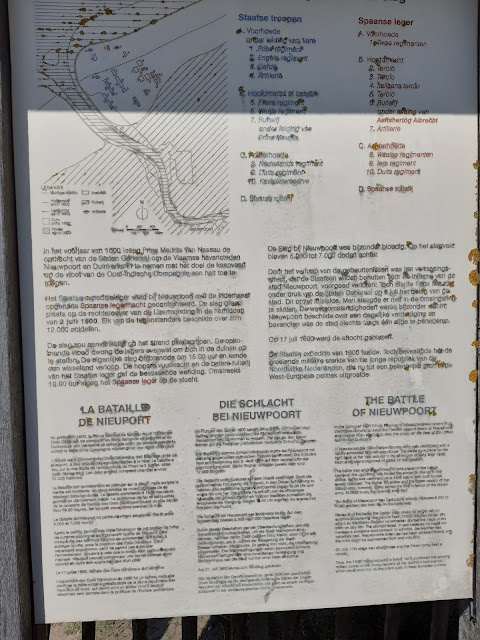The dunes are very dificult terrain to march through, the dry sand, steep slopes of the dunes. Imagine doing that with armour, pikes or heavy equipment. Keeping formation almost impossible Impossible to keep an overview of the battle. Attacking in these circumstances is madness. But the Archduke Albrecht gave the order. With the incomming tide, the States ships were comming closer to the shore. Albrecht fiered the States army would escape.
The States army, led by Prins Maurtis was on a mission to besiege the privateers town of Nieuwpoort and Duinkerken ordered by the States General of the 7 Provinces. The Archduke Albrecht hastely assembled an army , of which a big part did a forced march covering 120km in 4 days. With a big part of his army exhausted, yet another reason the Archduke should not have attacked in such a difficult terrain.
Prins Maurits an his States army were completly surprised by how quick the Spanish army had been assembled. His army was trapped, adn he could only hope to escape with a small part of the army in case the Spansh force would keep position. His only hope in that case would have been to attack himselve...
Maurits was victorious, but the campaign was a fiasco. On the other hand, losing the one major army of the States would have been a disaster. That is why this battle is so important for what would become the Dutch nation.
Another thing Maurtis had learned during his campaign was that the inhabitants of the Southern (Spanish occupied) Netherlands were alienated of the idea of the united 17 provincies . For a major part, this found its orrigin in the raiding parties undertaken by the last protestant stronghold in the Southern Netherland : Oostende.
The unjustly forgotten siege of Ostend (1601-1604) and the fall of this stonghold sealed the rupture of the once United Provinces of the Low Countries.
Appart from these plates and a small statue closer to town nothing remindes of the battle.










